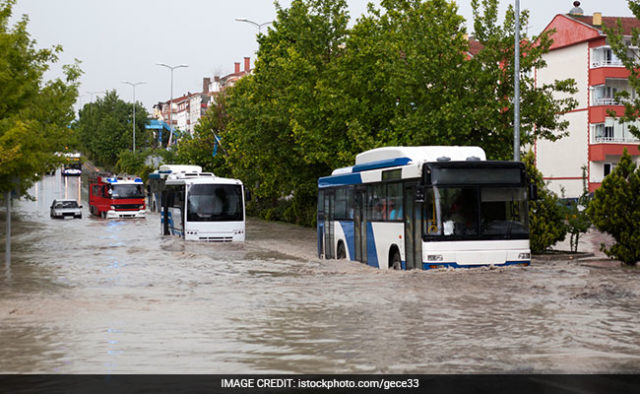Scientists are combining Twitter, citizen science and cutting-edge artificial intelligence (AI) techniques to develop an early-warning system for flood-prone communities.
Researchers from the University of Dundee in the UK have shown how AI can be used to extract data from Twitter and crowdsourced information from mobile phone apps to build up hyper-resolution monitoring of urban flooding.
Urban flooding is difficult to monitor due to complexities in data collection and processing. This prevents detailed risk analysis, flooding control, and the validation of numerical models.
Researchers set about trying to solve this problem by exploring how the latest AI technology can be used to mine social media and apps for the data that users provide.
They found that social media and crowdsourcing can be used to complement datasets based on traditional remote sensing and witness reports.
Applying these methods in case studies, they found these methods to be genuinely informative and that AI can play a key role in future flood warning and monitoring systems.”Sea levels have been rising at an average rate of 3.4mm a year over the past decade. The extremes of today will become the average of the future so coastal cities and countries must take action to protect their land,” Wang said.
“We were particularly interested in the increased incidence of what we call sunny day flooding – flooding that occurs in the absence of any extreme weather event due to the mean sea level being higher,” he said.”A tweet can be very informative in terms of flooding data. Key words were our first filter, then we used natural language processing to find out more about severity, location and other information,” Wang said. “Computer vision techniques were applied to the data collected from MyCoast, a crowdsourcing app, to automatically identify scenes of flooding from the images that users post,” he added.
“We found these big data-based flood monitoring approaches can definitely complement the existing means of data collection and demonstrate great promise for improving monitoring and warnings in future,” he said. Twitter data was streamed over a one-month period in 2015, with the filtering keywords of ‘flood’, ‘inundation’, ‘dam’, ‘dike’, and ‘levee’. More than 7,500 tweets were analysed over this time.MyCoast is a system used by a number of environmental agencies to collect ‘citizen science’ data about various coastal hazards or incidents.
The system contains over 6,000 flood photographs, all of which were collected through the mobile app.The information extracted by AI tools was validated against precipitation data and road closure reports to examine the quality of the data.Flood-related tweets were shown to correlate to precipitation levels, while the crowdsourced data matched strongly with the road closure reports.
The researchers believe a tool like Twitter is more useful for large-scale, inexpensive monitoring, while the crowdsourced data provides rich and customised information at the micro level.Taken together, these tools can be used to monitor the water penetration of urban flooding over a city, researchers said. This can be then used to improve forecasting models and early warning systems to help residents and authorities prepare for an upcoming flood.








